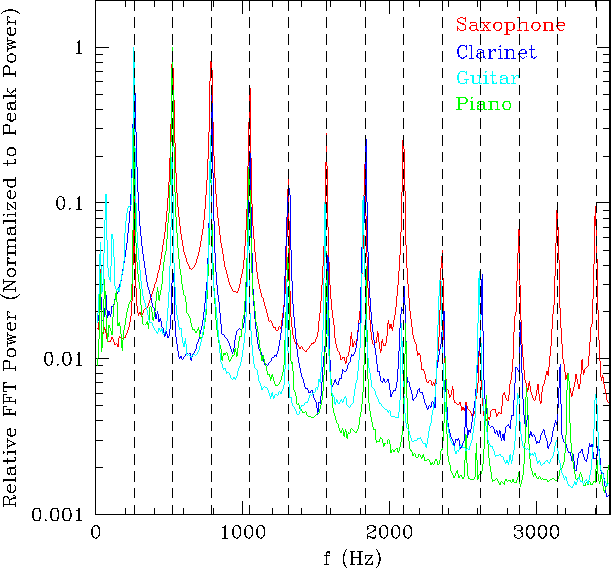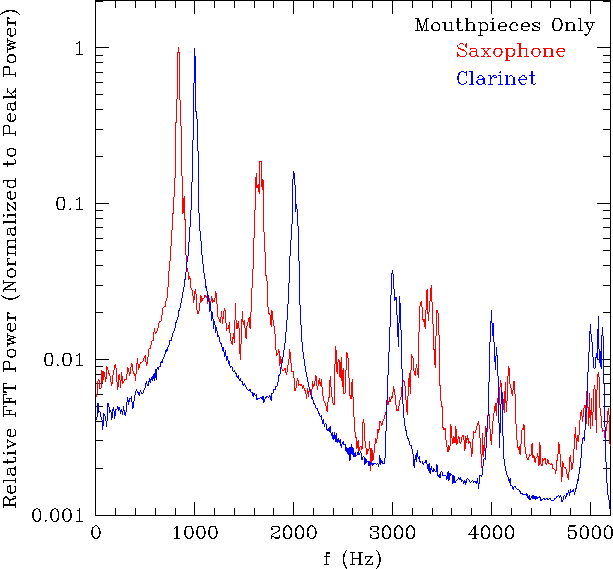Figure 1:
The sound spectra produced by several musical instruments
playing the same tone (C ,
,  Hz) analyzed and recorded by
J. Hughes using the program fftscope by H. S. Lu. The vertical dashed
lines indicate the frequencies of harmonic overtones. These spectra
are only broadly representative of their respective instruments and
will differ depending on the performer, how loud the note is played,
what portion of the note (e.g., attack, sustain) is analyzed and so
on. Some features to note are the following. The second harmonic of
the clarinet is suppressed as expected given that this instrument has
a closed conical bore and should only show the odd harmonics. Note as
well the inharmonicity of the piano overtones (green), which become
especially noticeable for the highest overtones (green peaks shifted
to the right compared to the dashed curves). See section 14.2 (p. 313)
of the textbook The Science of Sound, 3rd Edition, by T. D. Rossing, F. R. Moore, & P. A. Wheeler (RMW) for more details on piano
strings.
Hz) analyzed and recorded by
J. Hughes using the program fftscope by H. S. Lu. The vertical dashed
lines indicate the frequencies of harmonic overtones. These spectra
are only broadly representative of their respective instruments and
will differ depending on the performer, how loud the note is played,
what portion of the note (e.g., attack, sustain) is analyzed and so
on. Some features to note are the following. The second harmonic of
the clarinet is suppressed as expected given that this instrument has
a closed conical bore and should only show the odd harmonics. Note as
well the inharmonicity of the piano overtones (green), which become
especially noticeable for the highest overtones (green peaks shifted
to the right compared to the dashed curves). See section 14.2 (p. 313)
of the textbook The Science of Sound, 3rd Edition, by T. D. Rossing, F. R. Moore, & P. A. Wheeler (RMW) for more details on piano
strings.
 |
Figure 2:
The sound spectra produced by blowing through saxophone and
clarinet mouthpieces alone. These are perceived as nasty squawking
sounds! Single reed mouthpieces like these work in conjunction with
the main body of the woodwind instrument to produce pleasing sounds at
the resonance frequency of the pipe through a positive feedback
process (see section 12.1, p. 247, of RMW for more details).
 |
John Hughes
2002-04-05


